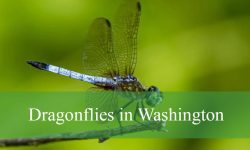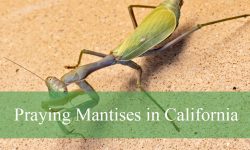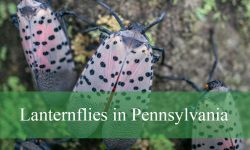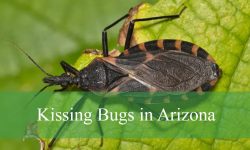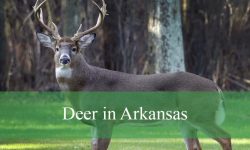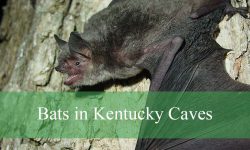Illinois boasts a rich and diverse bird population that reflects its variety of habitats—from dense woodlands and open prairies to wetlands and urban parks. Many familiar and beloved species thrive here, making Illinois an exciting place for birdwatchers and nature lovers alike. Learning to identify the common birds you’re likely to encounter enhances your outdoor experiences and deepens your appreciation for the state’s natural beauty.
This comprehensive guide introduces 38 common birds found throughout Illinois, complete with detailed descriptions and clear photographs to help you spot and identify them with confidence. Each bird is presented with key features, behaviors, and interesting facts, making this resource perfect for beginners and seasoned birders. Dive into the world of Illinois birds and start recognizing the feathered residents of the Prairie State today.
Types of Birds Found in Illinois
Red-winged Blackbird
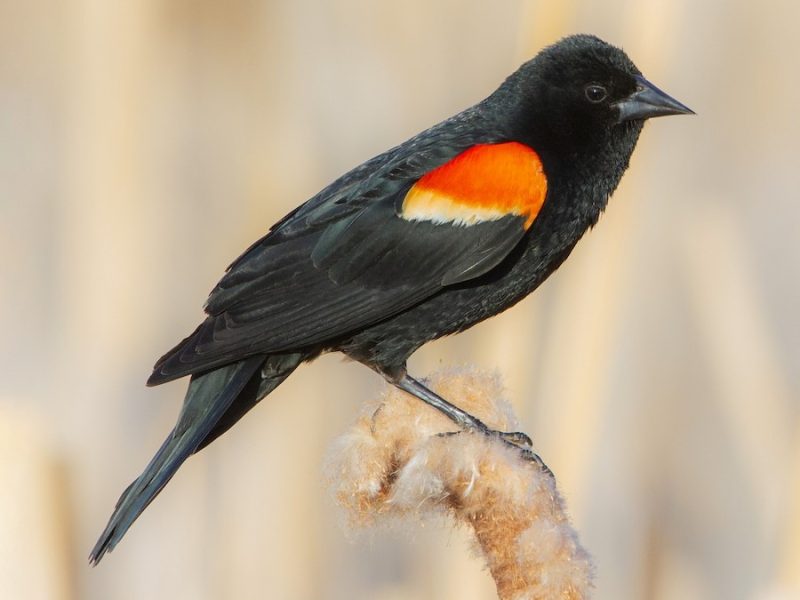
Red-winged Blackbirds are a striking species found in Illinois, especially in marshy or wetland areas. Males are glossy black with bright red and yellow shoulder patches, called epaulets, which they flash during territorial displays. Females are streaky brown and resemble large sparrows. They measure about 7–9 inches long with a wingspan of 12–15 inches.
These birds are highly territorial during breeding season, with males often perching on cattails or fence posts while loudly declaring their presence with a gurgling “conk-a-ree!” They feed on insects, seeds, and grains, making them common in both natural wetlands and agricultural fields. Outside of the breeding season, they form large flocks and may travel with other blackbird species.
Red-winged Blackbirds build their nests low among reeds or shrubs, often over water. Females lay 3–5 eggs and raise one to two broods per year. Fun fact: A single male may attract and defend a territory with up to 15 different females, making them one of North America’s most polygynous bird species.
House Sparrow
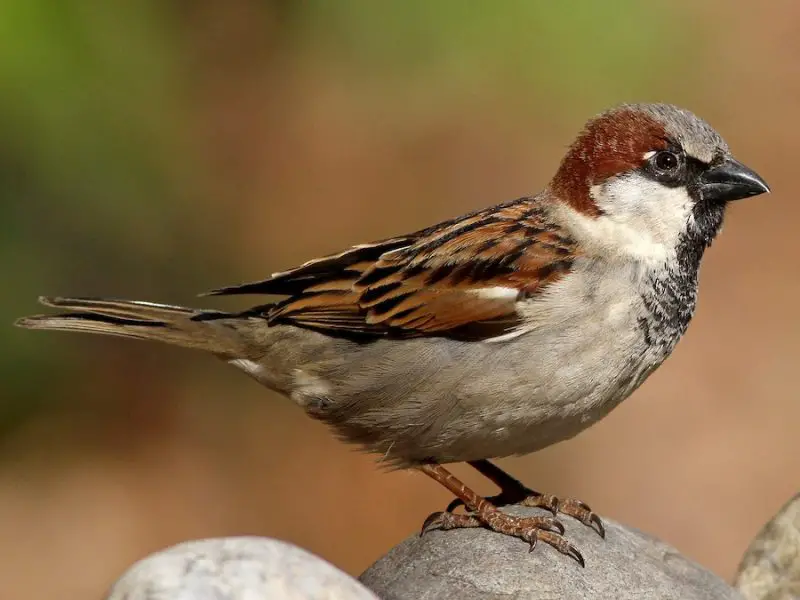
The House Sparrow is a small, stocky bird commonly seen in cities, towns, and rural areas throughout Illinois. Males have gray crowns, black bibs, and chestnut-colored napes, while females and juveniles are mostly brown with duller markings and streaked backs. These sparrows measure around 6 inches in length and have a wingspan of approximately 9 inches.
House Sparrows are highly adaptable and often live in close association with humans. They thrive in urban environments, nesting in building crevices, eaves, or streetlights. Their chirping calls are sharp and repetitive, often heard in noisy flocks around shopping centers, parking lots, or backyard feeders. Their diet consists mainly of grains, seeds, and food scraps, although they will also eat insects, especially when feeding young.
Breeding takes place from spring through summer, and they may raise multiple broods in a season. Nests are messy structures made from grass, feathers, and even trash. Fun fact: Despite their name, House Sparrows are not native to North America—they were introduced from Europe in the mid-1800s and have since spread across the continent.
House Finch
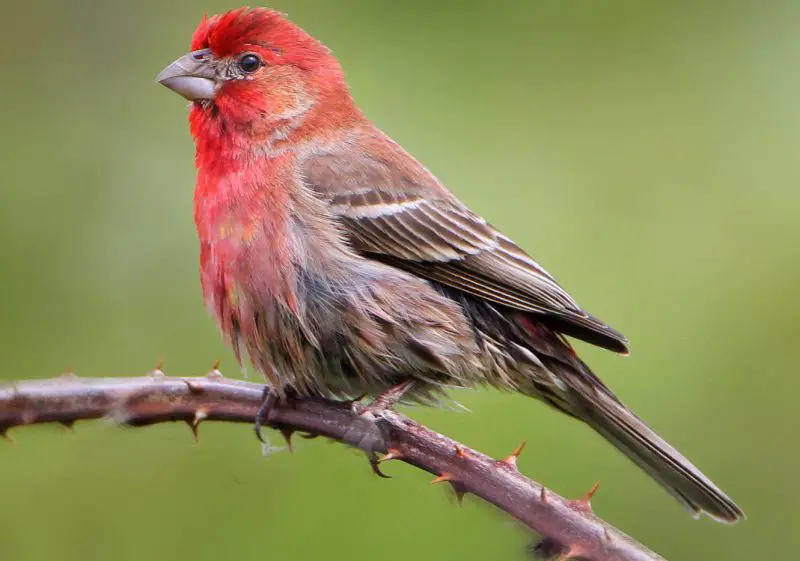
The House Finch is a colorful, melodic bird often found in residential neighborhoods, parks, and open woodlands in Illinois. Males are recognizable by their bright red foreheads, throats, and chests, while females are brown-streaked with no red coloring. These finches are about 5 to 6 inches long, with a wingspan of 8 to 10 inches.
They are social and often gather in small flocks, especially around bird feeders, where they feed on seeds, fruits, and buds. Their song is a pleasant, warbling series of notes that can be heard year-round, particularly during breeding season. They are often seen perching on wires, rooftops, or tree branches, scanning for food or singing to establish territory.
House Finches build cup-shaped nests in trees, hanging plants, or building ledges. Females lay 2 to 6 eggs per clutch and may raise several broods in a single year. Fun fact: House Finches were originally native to the western United States but were introduced to the East in the 1940s—today, they are found coast to coast.
Downy Woodpecker
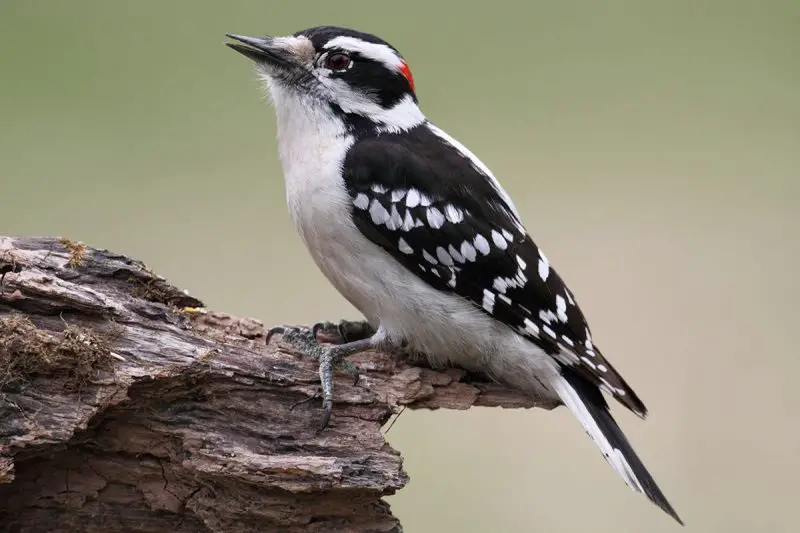
The Downy Woodpecker is the smallest woodpecker species in Illinois, measuring only 6 to 7 inches in length with a wingspan of 10 to 12 inches. Males have a small red patch on the back of the head, while females lack this marking. Both sexes have a black-and-white checkered pattern, white underparts, and a short, chisel-like bill.
This species is commonly seen in wooded areas, parks, orchards, and even suburban yards. They cling to tree trunks and branches as they search for insects, especially beetle larvae, ants, and caterpillars. Their sharp “pik” call and rhythmic drumming on wood are familiar sounds in forested environments. In winter, they often visit suet feeders.
Downy Woodpeckers nest in tree cavities, usually excavated in dead or decaying wood. They lay 3 to 8 white eggs per clutch. Fun fact: Though they look very similar to the larger Hairy Woodpecker, the Downy Woodpecker has a much shorter bill, roughly equal in length to its head.
Northern Cardinal
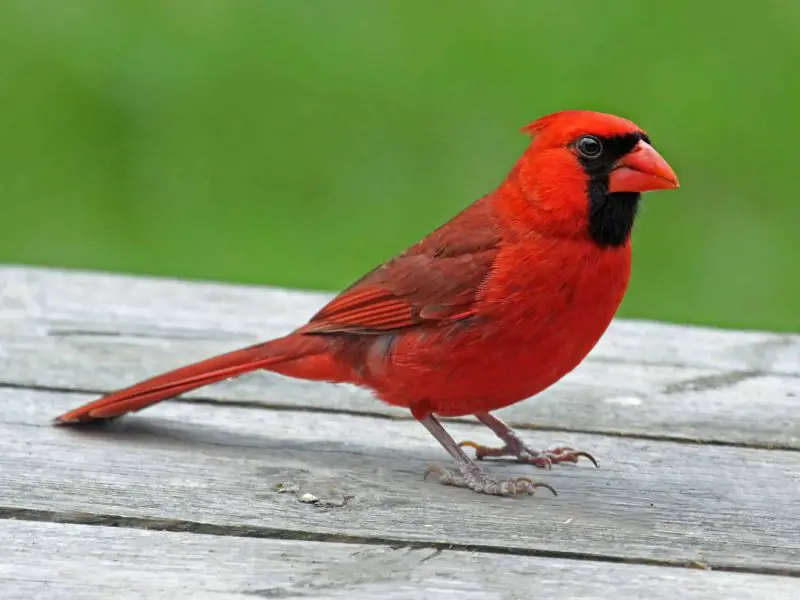
The Northern Cardinal is one of the most recognizable birds in Illinois, thanks to its vibrant red plumage in males and warm brown tones with reddish accents in females. Both sexes have a distinctive crest on their heads and a black mask surrounding their bright orange beaks. Cardinals typically measure about 8–9 inches long with a wingspan of 10–12 inches, making them medium-sized songbirds.
Cardinals are non-migratory and can be found throughout Illinois year-round. They prefer woodland edges, suburban gardens, parks, and dense shrubs where they can nest and forage. Males are fiercely territorial, especially during the breeding season, when their clear whistling songs ring loudly through their habitat. Their diet includes seeds, berries, and insects, and they often visit bird feeders.
Northern Cardinals typically lay 2–5 eggs per brood and may have up to three broods in a single season. Nests are built in thick vegetation, usually 3–10 feet off the ground. Fun fact: Male cardinals have been known to fight their own reflection, mistaking it for a rival during breeding season!
American Robin
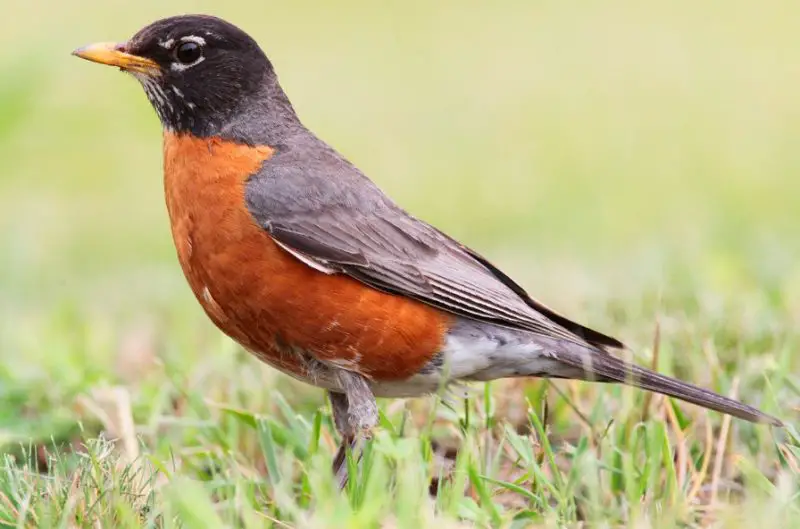
The American Robin is a familiar sight across Illinois, especially during spring and summer when its cheerful song signals warmer days. Easily recognized by its reddish-orange breast, gray upperparts, and white eye ring, the robin stands about 9–11 inches tall with a wingspan of 12–16 inches. Males and females look similar, though males may be slightly more vibrant.
American Robins thrive in open fields, city parks, lawns, and forests. They are often seen hopping on the ground, tilting their heads to search for worms and insects. While they eat mostly invertebrates during the breeding season, their diet shifts to fruits and berries in colder months. Their song is a series of melodious phrases that are among the first bird sounds heard at dawn.
These birds build cup-shaped nests using mud and grass, usually in trees or on building ledges. Females lay 3–5 blue eggs per clutch and can have two to three broods per year. Fun fact: American Robins are one of the first bird species to begin singing at dawn, a behavior known as the “dawn chorus.”
Red-bellied Woodpecker
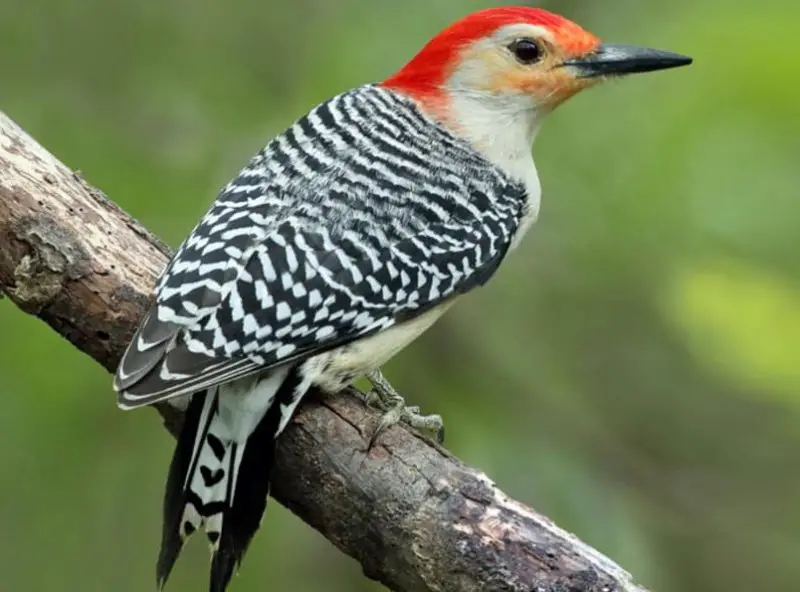
The Red-bellied Woodpecker is a medium-sized woodpecker with striking black-and-white barred wings and a pale face. Despite the name, its red belly is faint and often hard to see, while its most noticeable feature is the bright red crown and nape in males (females lack red on the crown). Adults are about 9 to 10.5 inches long with a wingspan of 13 to 17 inches.
This woodpecker is found in woodlands, forest edges, and suburban areas with mature trees. It feeds on insects, nuts, seeds, and fruit, often storing food in bark crevices. Its vocalizations include rolling “churr” sounds and repeated “querr” calls, which can echo through the forest. It also drums loudly on tree trunks or even metal poles to communicate or attract mates.
Nesting occurs in tree cavities excavated in dead wood. Females lay 3 to 8 eggs, and both parents share incubation duties. Fun fact: Red-bellied Woodpeckers have incredibly long, sticky tongues—about twice the length of their beaks—which they use to extract insects from deep within tree bark.
Mourning Dove

The Mourning Dove is a slender, graceful bird with soft brown-gray plumage, black spots on the wings, and a long, tapered tail with white edges. It measures about 9 to 13 inches in length and has a wingspan of 17 to 18 inches. Its mournful, cooing call gives the species its name and is one of the most recognizable bird sounds in Illinois.
These doves are highly adaptable and found in open fields, roadsides, suburbs, and agricultural areas. They forage on the ground for seeds and grains and are frequent visitors to backyard feeders. In flight, their wings produce a whistling sound caused by air rushing through their feathers.
Mourning Doves are prolific breeders, often raising several broods per year. Their nests are flimsy platforms of twigs placed in trees, shrubs, or even on balconies. Females typically lay two eggs per clutch. Fun fact: Mourning Doves can fly at speeds up to 55 miles per hour, making them one of the fastest flying birds in North America.
European Starling
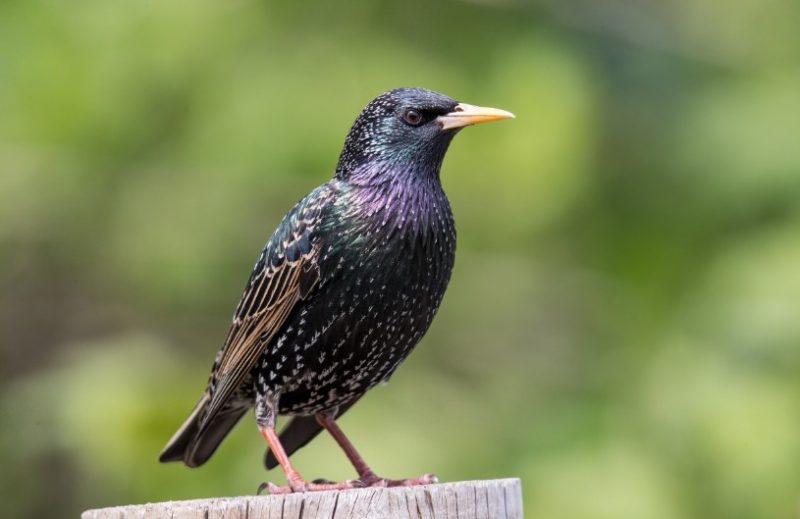
The European Starling is a highly adaptable and abundant bird in Illinois, recognized by its glossy black feathers that shimmer with purple and green iridescence. During winter, their plumage becomes speckled with white dots, giving them a star-like appearance. These birds are medium-sized, about 8.5 inches long with a wingspan of 13–16 inches, and have short tails and long, pointed yellow bills (darker in winter).
Starlings are aggressive, noisy, and social birds often found in urban areas, farmlands, and parks. They form large flocks that move in synchronized flight patterns called murmurations, especially at dusk. Their vocalizations are varied and mimicry-based, including whistles, clicks, and the sounds of other birds or even machinery. They feed on insects, fruits, grains, and scraps and often compete with native birds for nest sites.
These birds nest in cavities of buildings, trees, or birdhouses, often displacing other species. Females lay 4 to 6 eggs and may raise two or more broods per year. Fun fact: European Starlings were introduced to North America in the 1890s by a group that wanted to bring every bird mentioned in Shakespeare’s works to the continent.
Tufted Titmouse
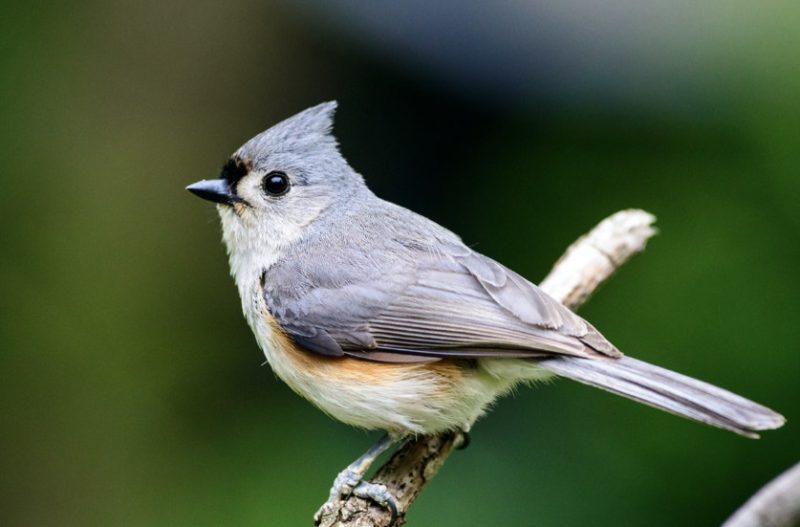
The Tufted Titmouse is a small, charming bird easily identified by its gray plumage, white belly, and the distinct crest or “tuft” on its head. It also has a black forehead and rusty flanks. Measuring about 5.5 to 6.3 inches in length with a wingspan of 7.9 to 10.2 inches, the titmouse is a common visitor to backyard feeders in wooded and suburban areas.
These birds are active and curious, often seen flitting through trees or clinging to bark while foraging. Their diet includes seeds, berries, insects, and spiders. Their call is a loud, clear “peter-peter-peter,” which they repeat frequently, especially during the breeding season. They often join mixed flocks with chickadees and nuthatches during colder months.
Tufted Titmice nest in natural tree cavities or abandoned woodpecker holes, lining their nests with soft materials like fur and moss. Females lay 5 to 7 eggs per clutch. Fun fact: Titmice have been observed stealing hair from live mammals, including dogs and squirrels, to use as nesting material!
White-breasted Nuthatch

The White-breasted Nuthatch is a compact, agile bird with a short tail, long pointed bill, and a habit of moving headfirst down tree trunks. It has a white face and underparts, a bluish-gray back, and a black cap that extends to the nape. Adults measure 5 to 6 inches long with a wingspan of 8 to 10 inches.
These birds live in mature forests and wooded neighborhoods across Illinois. They are frequently seen creeping along tree bark in search of insects and seeds, often prying open crevices with their powerful beaks. Their nasal “yank-yank” call is easy to recognize, and they are regular visitors to suet and peanut feeders during winter.
White-breasted Nuthatches nest in tree cavities and often reuse the same sites annually. Females lay 5 to 9 eggs per clutch. Fun fact: To protect their nests from predators, nuthatches may smear crushed insects around the entrance hole, possibly using the smell as a deterrent.
Dark-eyed Junco
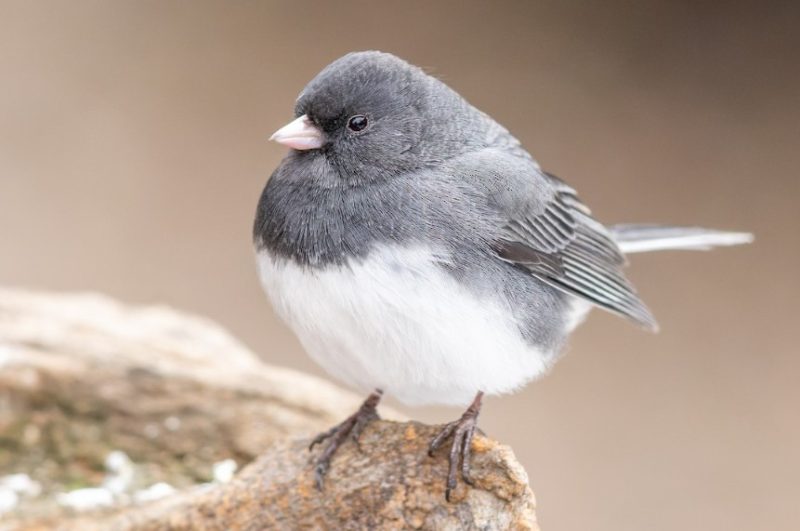
The Dark-eyed Junco is a small, ground-feeding sparrow that is especially abundant in Illinois during winter months. The most common form seen in the state has slate-gray upperparts and a white belly, with a pinkish bill and white outer tail feathers that flash in flight. They range from 5 to 6.5 inches in length with a wingspan of about 7 to 10 inches.
These birds forage in flocks under shrubs, along forest edges, and beneath feeders, where they scratch the ground for seeds and insects. Their trilling song and sharp “tick” calls can be heard throughout the colder months. Juncos migrate south from northern forests and return north to breed in spring, making them a familiar winter presence.
During the breeding season, they nest on the ground in coniferous or mixed forests, often hiding their nests under logs or roots. Females lay 3 to 6 eggs and may raise two broods per season. Fun fact: Because of their seasonal appearance, Dark-eyed Juncos are often nicknamed “snowbirds” and are considered a harbinger of winter.
Song Sparrow
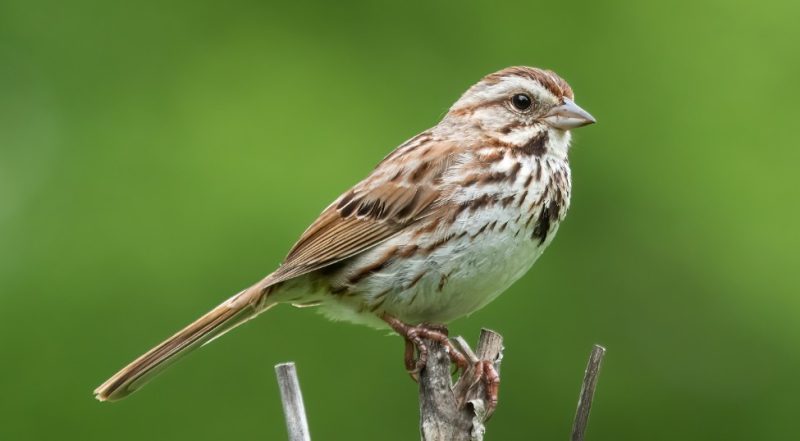
The Song Sparrow is a streaky brown bird with a rounded head, thick neck, and a long tail often pumped in flight. It has bold brown streaks across its white chest, which converge into a central dark spot. Measuring around 5.5 to 7 inches long with a wingspan of 7.5 to 9.5 inches, this species blends easily into grassy or shrubby habitats.
Song Sparrows are found year-round in Illinois and occupy a variety of environments including marshes, gardens, and forest edges. Their musical song, which includes three opening notes followed by a varied trill, gives them their name. They forage mostly on the ground for insects, seeds, and berries, often scratching through leaves in search of food.
Nesting begins in early spring, with females building cup-shaped nests low in shrubs or grasses. They may raise multiple broods of 3 to 5 eggs each. Fun fact: Song Sparrows have regional “dialects,” meaning that their songs can vary significantly depending on where they live.
Eastern Bluebird
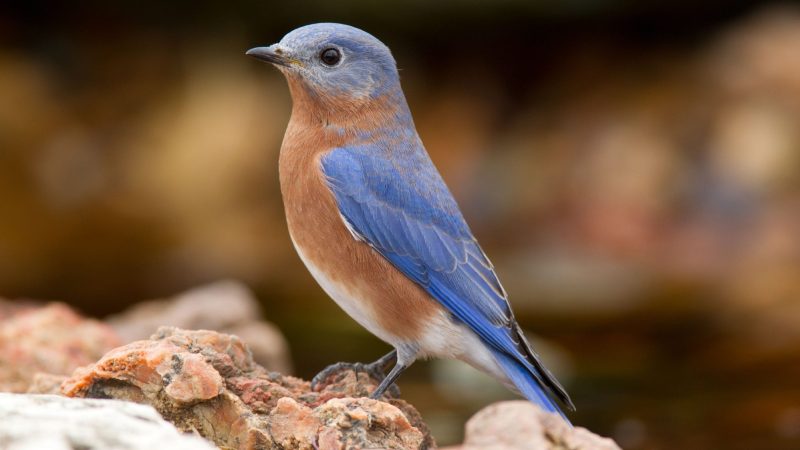
The Eastern Bluebird is a small, thrush-like bird with brilliant blue plumage on the head and back, a rusty red chest, and white underparts. Females are duller in color but still recognizable by their soft blue wings and warm brownish tones. Bluebirds measure about 6.5 to 7 inches long with a wingspan of 9.5 to 12 inches, making them slightly smaller than an American Robin.
These birds prefer open habitats like pastures, orchards, and suburban lawns with scattered trees and low ground cover. They perch on wires and fence posts as they scan for insects, which make up the bulk of their diet in summer. In colder months, they switch to berries and fruits. Their song is a soft, warbling “cheer-cheerful-charmer” and is often heard during the breeding season.
Eastern Bluebirds nest in tree cavities or man-made nest boxes. Females lay 3 to 7 pale blue eggs and can raise up to three broods per season. Fun fact: Due to competition with invasive species like House Sparrows and European Starlings, Eastern Bluebird populations once declined sharply—but conservation efforts, especially nest box programs, have helped them rebound significantly.
Common Grackle
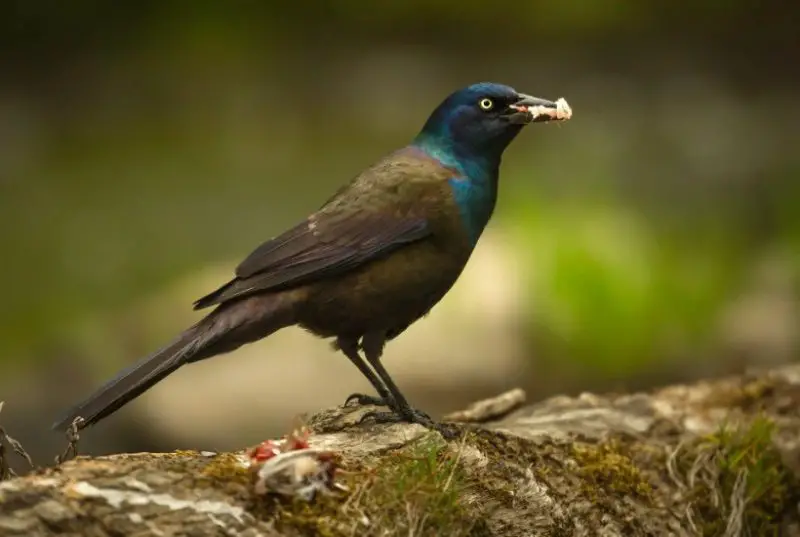
The Common Grackle is a bold, medium-sized blackbird with a long, keel-shaped tail and a striking iridescent sheen that appears purple, blue, or green in sunlight. Its yellow eyes give it an intense expression, and it stands about 11 to 13 inches tall with a wingspan of 14 to 18 inches. Males are generally more iridescent than females.
Grackles are social and noisy birds often found in large flocks in agricultural fields, suburban neighborhoods, and urban parks. They forage on the ground or wade in shallow water, feeding on grains, insects, small animals, and even garbage. Their calls are harsh and metallic, and they may mimic other sounds. Despite their noisy presence, they are important insect predators in ecosystems.
These birds nest in trees, shrubs, or even on man-made structures. Nests are bulky and made from grasses, twigs, and debris. Females lay 1 to 7 eggs per clutch. Fun fact: Common Grackles have been observed cracking hard-shelled acorns and even dunking dry food items in water to soften them before eating—demonstrating surprising problem-solving abilities.
Northern Flicker
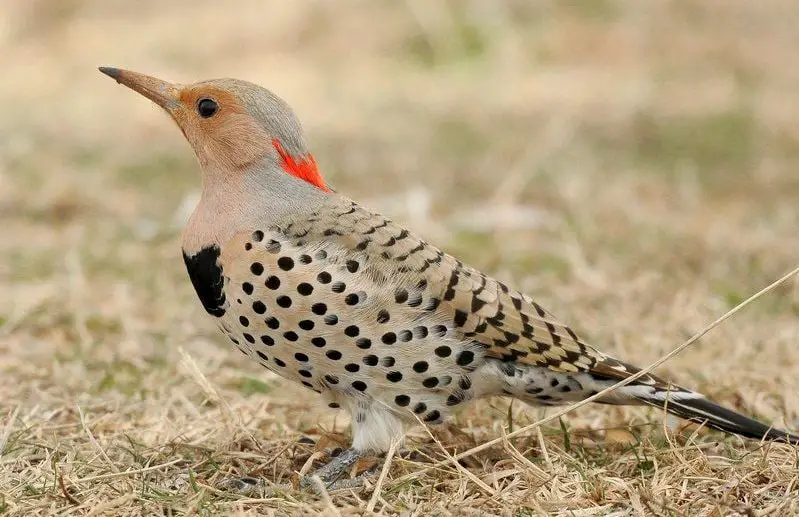
The Northern Flicker is a large woodpecker with a unique appearance, sporting a brown body with black barring, a white rump, and a black crescent-shaped patch on its chest. In Illinois, the “yellow-shafted” form is most common, showing yellow underwings and a bright red nape. Flickers measure 11 to 12 inches in length with a wingspan of 16 to 20 inches.
Unlike many other woodpeckers, Northern Flickers often forage on the ground, using their long, barbed tongues to extract ants and beetles—their primary diet. Their call is a loud, repeating “wick-a-wick-a-wick,” and they also emit sharp “kleer” calls or drumming sounds on metal and wood surfaces. Flickers are seen in woodlands, forest edges, parks, and even open yards with scattered trees.
They nest in tree cavities, often in dead wood, and may reuse the same site for several years. Females lay 5 to 8 white eggs, and both parents share incubation duties. Fun fact: Northern Flickers eat more ants than any other North American bird species, with ants making up nearly half their diet.
Carolina Wren
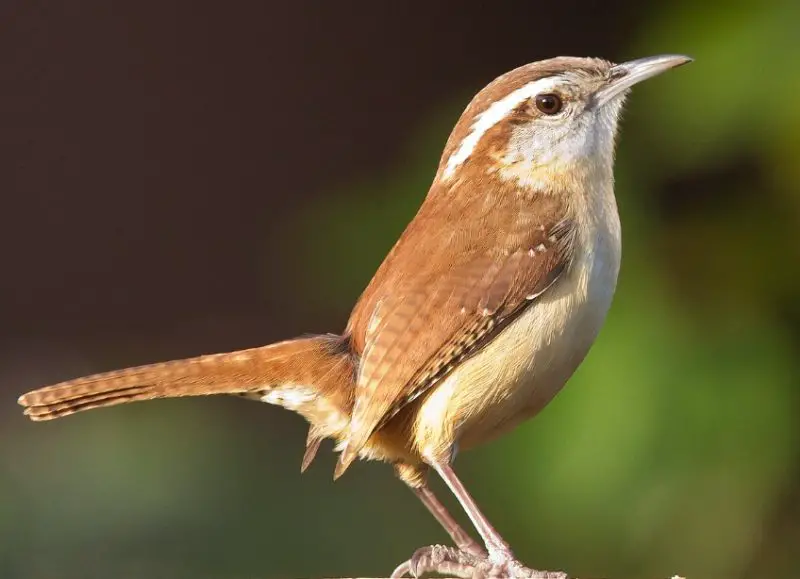
The Carolina Wren is a small, energetic bird with warm, reddish-brown plumage, a white throat and belly, and a distinctive white eyebrow stripe. It has a slightly curved bill and a short tail that often points upward. Adults are about 4.7 to 5.5 inches long with a wingspan of 11 inches, making them small but surprisingly loud.
This wren prefers dense shrubs, thickets, woodpiles, and overgrown gardens where it can forage for insects and spiders. It rarely visits feeders for seeds but may be attracted to suet or mealworms. Its song is a powerful and repeated “tea-kettle, tea-kettle, tea-kettle,” often delivered by males with impressive volume for such a small bird.
Carolina Wrens build dome-shaped nests in tree cavities, hanging baskets, mailboxes, or even flowerpots. Females lay 4 to 6 eggs and may raise multiple broods per season. Fun fact: These wrens are known for nesting in unusual places—many homeowners have found them nesting inside garages, boots, or even unused grills.
Gray Catbird
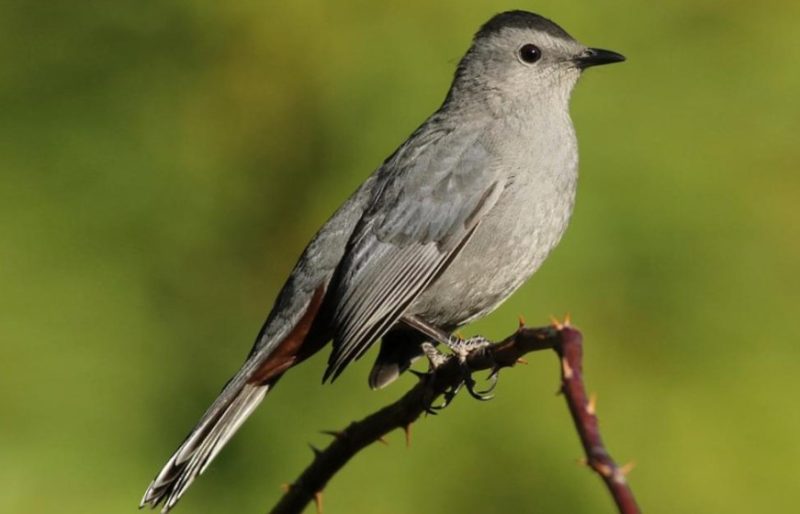
The Gray Catbird is a sleek, medium-sized songbird with slate-gray feathers, a black cap, and a rusty patch under the tail. Its long, black tail and slender, dark bill give it a distinctive profile. These birds measure about 8.5 to 9.5 inches in length with a wingspan of around 11 inches.
Catbirds are secretive yet curious and are often heard before they are seen. They prefer dense shrubs, forest edges, and thickets, especially near water. Their diet includes insects, berries, and fruits. They get their name from their “mew”-like call, which sounds much like a cat. In addition to this, their song is a long, varied mix of warbles, squeaks, and imitations of other birds.
They build open-cup nests in thick vegetation, typically low to the ground. Females lay 2 to 6 eggs per brood and may raise two clutches in one season. Fun fact: Gray Catbirds are excellent mimics and can imitate the songs of over 40 other bird species, often combining them into a single, complex song.
Baltimore Oriole
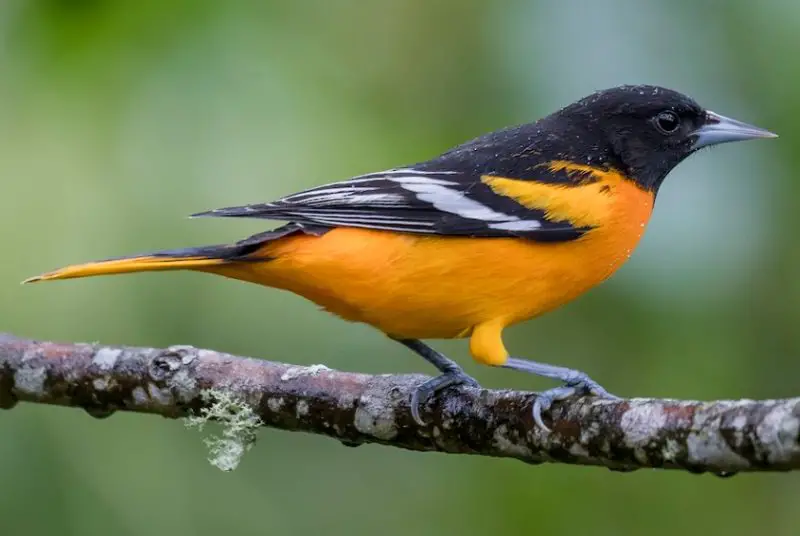
The Baltimore Oriole is a brightly colored songbird, with males displaying vibrant orange underparts and shoulders, contrasted with black heads and backs. Females are paler, with more yellow-orange tones and gray-brown wings. Adults measure around 6.5 to 8 inches long, with a wingspan of 9 to 12 inches.
These orioles prefer open woodlands, forest edges, and leafy suburban areas, especially where tall deciduous trees are present. They feed primarily on insects, caterpillars, fruit, and nectar. In spring, they are frequent visitors to feeders offering oranges or grape jelly. Their song is a rich, flute-like series of whistles that can often be heard high in the treetops.
Nests are remarkable hanging pouches woven from plant fibers and suspended from tree branches. Females lay 3 to 7 eggs and raise one brood per year. Fun fact: Baltimore Orioles are known for their impressive weaving skills—their nests can sway in the wind without falling, thanks to their tight and resilient construction.
Rose-breasted Grosbeak
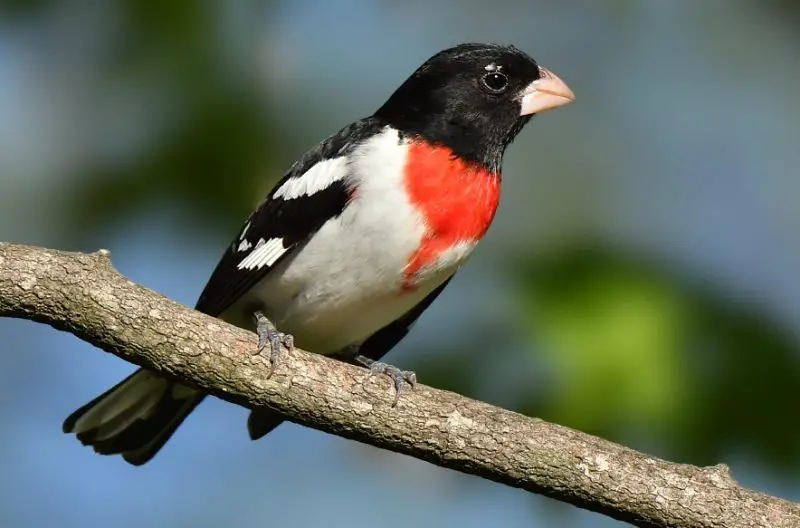
The Rose-breasted Grosbeak is a striking bird, with males showing bold black-and-white plumage and a vivid rose-red patch on the chest. Females are brown-streaked and resemble large sparrows but can be recognized by their thick, pale bills. Both sexes are about 7 to 8 inches long, with a wingspan of 11 to 13 inches.
These birds inhabit deciduous forests, gardens, and wooded edges. They feed on insects, fruits, seeds, and flower buds, and their strong bills help them crack open tough seeds. The male’s song is a sweet, warbling melody similar to an American Robin but more refined and lyrical.
Nesting occurs in shrubs or trees, often 5 to 20 feet above ground. Females lay 3 to 5 eggs, and both parents take turns incubating and feeding the chicks. Fun fact: While feeding their young, both parents may sing to one another—a behavior that’s relatively rare among songbirds and thought to strengthen pair bonds.
American Crow
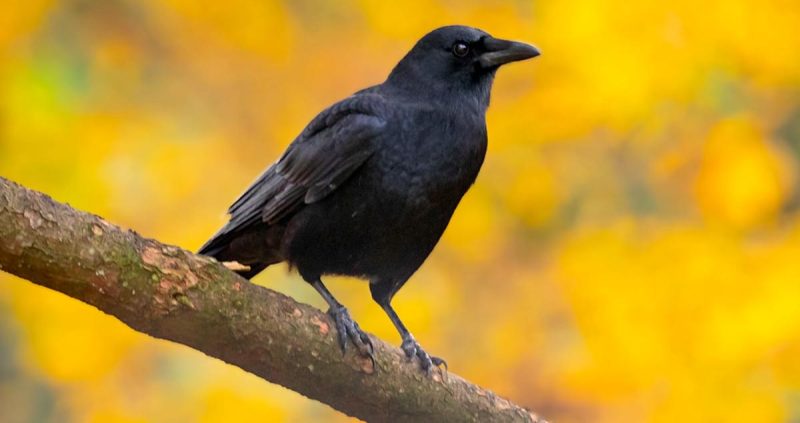
The American Crow is a large, all-black bird with a thick neck, strong bill, and a wingspan of about 33 to 39 inches. Adults are typically 16 to 21 inches long. Their feathers, beak, legs, and even eyes are all black, giving them a bold, commanding appearance.
Crows are extremely intelligent and social birds found in nearly all habitats, including woodlands, farmlands, cities, and suburbs. They are omnivores and opportunistic feeders, consuming everything from insects and small animals to fruit, grains, and garbage. Their vocalizations include a wide range of caws and rattles, and they can mimic human speech and other animal calls in captivity.
They build large nests high in trees using sticks and line them with soft materials. Females lay 3 to 7 eggs, and family members—sometimes even offspring from previous years—help raise the young. Fun fact: Crows are capable of recognizing human faces and can remember people who’ve treated them well—or badly—for years.
Cedar Waxwing
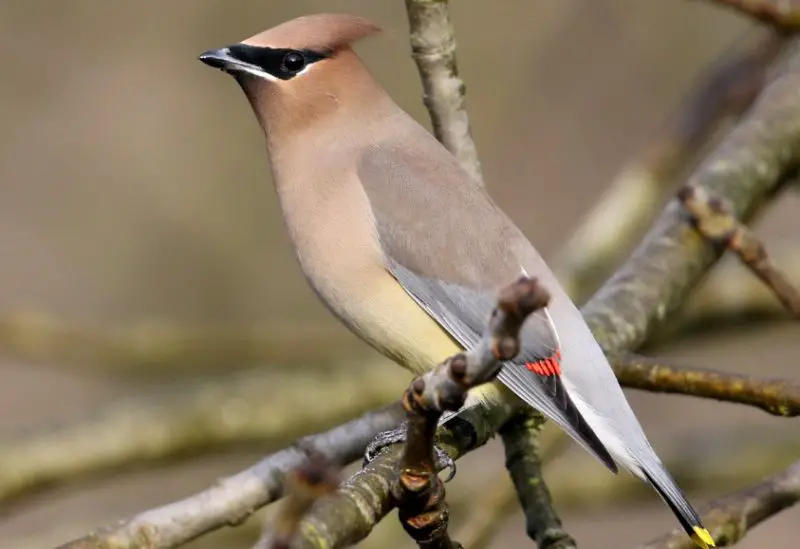
The Cedar Waxwing is a sleek, elegant bird with silky plumage, a crest on the head, and a distinctive black mask across the eyes. Its body is mostly pale brown, fading into soft gray and yellow, with bright red wax-like tips on its wing feathers. It measures about 6 to 7 inches long with a wingspan of 8 to 12 inches.
These birds are most often found in flocks, especially near fruiting trees and shrubs. Their diet consists heavily of berries, and they can sometimes be seen passing berries back and forth as part of courtship. Their high-pitched, whispery calls are subtle but recognizable, and they are more likely to be heard than seen when perched quietly in a tree.
Nesting takes place in trees or dense shrubs, where females lay 2 to 6 eggs per clutch. Both parents share incubation and feeding duties. Fun fact: Because Cedar Waxwings sometimes eat fermented berries, they have been known to become intoxicated—staggering or flying erratically after a feast.
Tree Swallow
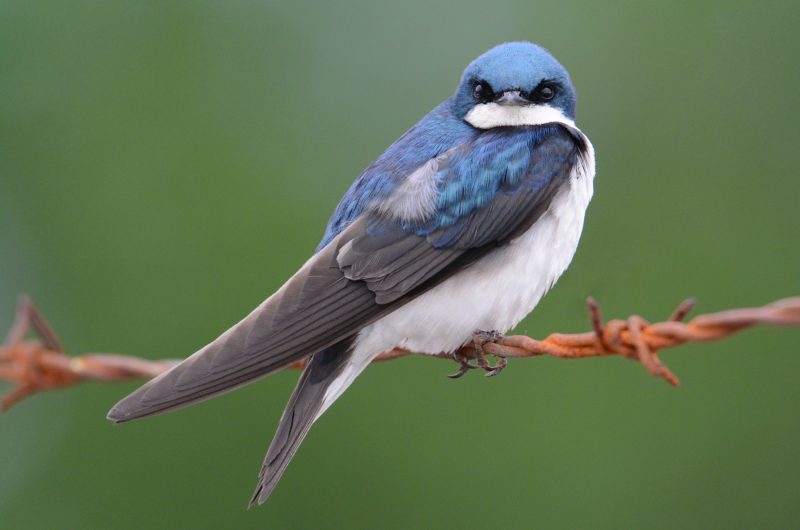
The Tree Swallow is a sleek, graceful bird with shimmering blue-green upperparts and clean white underparts. It has long, pointed wings, a slightly forked tail, and a tiny, flat bill. Measuring about 5 to 6 inches in length with a wingspan of 11 to 13 inches, it is well adapted for agile flight.
Tree Swallows are often seen gliding and diving through the air over fields, wetlands, and open water as they hunt for flying insects. They also feed on berries during colder months. These social birds gather in large flocks outside the breeding season and are known for their fluid, twittering calls. They frequently use nest boxes, especially in areas near water.
They nest in natural cavities or man-made boxes, lining their nests with feathers. Females typically lay 4 to 7 white eggs per clutch. Fun fact: Tree Swallows have been observed collecting feathers midair from other birds to line their nests, sometimes chasing them to snatch the feathers in flight.
Chipping Sparrow
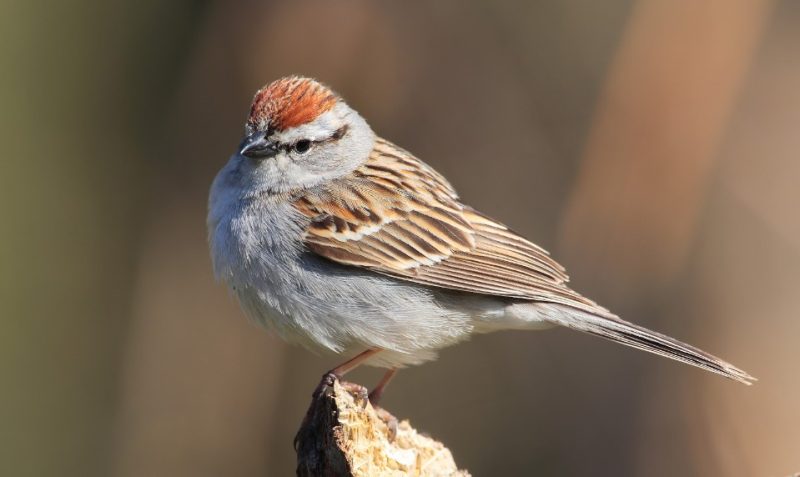
The Chipping Sparrow is a small, slender bird with a crisp appearance. It has a bright rufous cap, a white eyebrow, and a distinctive black eye line. Its back is streaked with brown and black, while its belly is pale gray. These sparrows are about 5 inches long with a wingspan of 8 inches.
These birds are common in open woods, gardens, and grassy parks, where they forage for seeds and insects. They often hop along the ground or perch on fences and shrubs. The male’s song is a long, mechanical trill that is often heard throughout spring and early summer.
Chipping Sparrows build neat cup-shaped nests in trees or shrubs, typically low to the ground. Females lay 3 to 5 blue or greenish eggs per brood. Fun fact: During the molting season, Chipping Sparrows can look quite different—losing their sharp breeding colors and adopting a more streaked and subdued look, which can confuse birdwatchers.
Brown-headed Cowbird

The Brown-headed Cowbird is a stocky blackbird with a short tail and thick bill. Males are glossy black with a rich brown head, while females are uniformly brown and more subdued in appearance. These birds are 7 to 8 inches long with a wingspan of 12 to 15 inches.
Cowbirds inhabit open fields, pastures, and suburban areas. Their diet consists mainly of seeds and insects, and they often forage on the ground near grazing animals or under feeders. Their call is a liquid-sounding “gurgle” and a high-pitched “see.” Though often seen in flocks, they are more secretive during the breeding season.
Brown-headed Cowbirds are known for brood parasitism—they do not build their own nests but lay their eggs in the nests of other bird species. The unsuspecting host raises the cowbird chick, often at the expense of its own young. Fun fact: Cowbirds have laid eggs in the nests of over 220 different species in North America.
Killdeer
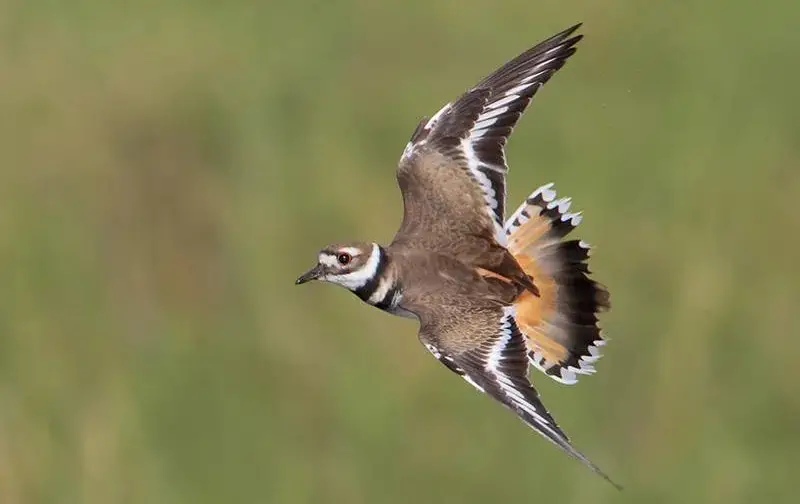
The Killdeer is a large, slender plover with long legs and a short bill. It is brown above and white below, with two bold black breast bands and a bright orange rump visible in flight. Measuring about 8 to 11 inches in length with a wingspan of 18 to 24 inches, it is one of the most widespread shorebirds found away from water.
These birds prefer open areas like gravel driveways, fields, and lawns, often nesting far from shorelines. Their loud, piercing “kill-deer” call gives them their name. Killdeer feed on insects, worms, and other invertebrates, usually running in short bursts and pecking at the ground.
They nest on the ground in shallow depressions, often in gravel or open dirt. Their eggs are speckled and well-camouflaged. If a predator approaches, Killdeer perform a dramatic “broken-wing” display to lure threats away. Fun fact: Killdeer chicks are precocial—able to walk and feed themselves within hours of hatching.
Eastern Meadowlark

The Eastern Meadowlark is a stocky, robin-sized bird with bright yellow underparts and a bold black “V” on the chest. Its upperparts are brown and heavily streaked, and its tail is short with white outer feathers. Adults are about 8.5 to 10 inches long with a wingspan of 14 to 16 inches.
Meadowlarks inhabit grasslands, hayfields, and prairies, where they forage for insects and seeds. They are more often heard than seen—their flute-like, whistled song carries across open fields and is a familiar sound in rural Illinois. They often perch on fence posts or tall grasses while singing.
Nests are built in grass depressions and covered with a woven dome of grass for concealment. Females lay 3 to 6 eggs and may raise more than one brood per season. Fun fact: Though they resemble blackbirds, Eastern Meadowlarks are not true larks and are more closely related to orioles and grackles.
Indigo Bunting
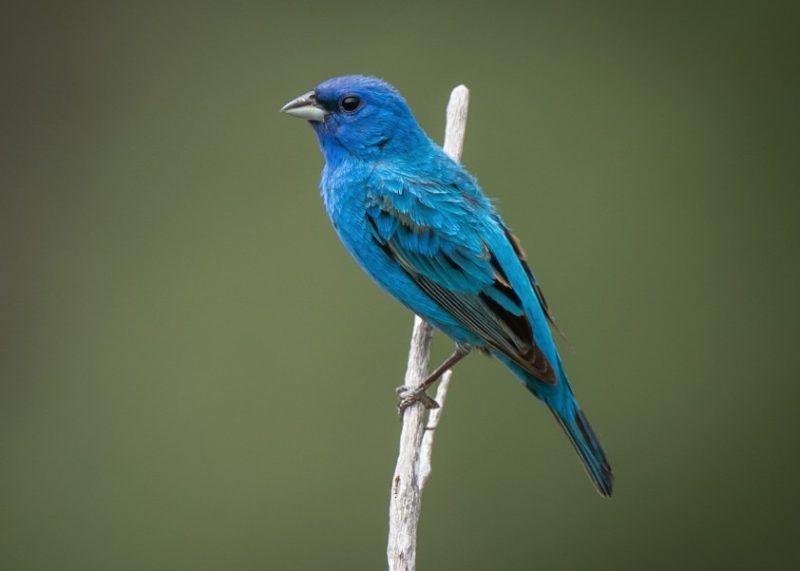
The Indigo Bunting is a small, dazzling songbird with males exhibiting brilliant blue plumage that glows in sunlight. Females and juveniles are brown and subtly streaked, with lighter underparts. These birds measure about 4.5 to 5 inches long with a wingspan of 7 to 9 inches, making them compact and energetic.
Indigo Buntings prefer weedy fields, woodland edges, and brushy areas where they sing from exposed perches during the breeding season. Their song is a cheerful, warbling series of paired notes, repeated in a steady rhythm. They feed on seeds, berries, and insects and often visit native wildflower patches or low shrubs while foraging.
These buntings build cup-shaped nests low in dense vegetation. Females lay 3 to 4 pale blue eggs and may raise two broods per summer. Fun fact: Indigo Buntings migrate at night and navigate by the stars, using celestial cues to guide their long journeys between North and Central America.
Ruby-throated Hummingbird
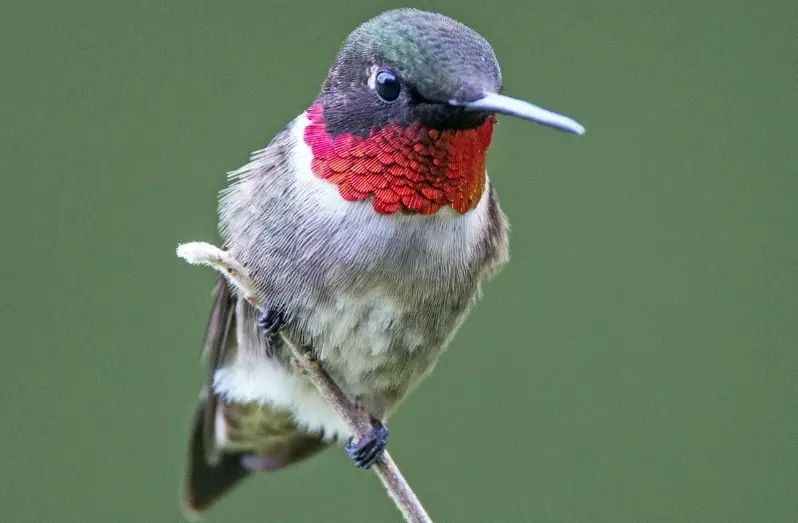
The Ruby-throated Hummingbird is the only hummingbird species commonly found in Illinois. Males are striking with iridescent green backs and a shimmering red throat patch that appears black in some light. Females lack the red throat and have whitish underparts. These tiny birds are just 3 to 3.5 inches long with a wingspan of 4 to 4.5 inches.
They are lightning-fast flyers with the ability to hover, fly backward, and beat their wings over 50 times per second. Their diet consists primarily of nectar from tubular flowers, supplemented by small insects and spiders for protein. Their high-pitched chittering calls are often heard around blooming plants or feeders.
Ruby-throated Hummingbirds build tiny, camouflaged nests using plant fibers and spider silk, usually placed on tree branches. Females lay two white eggs per brood and raise the young alone. Fun fact: Despite their size, these hummingbirds can migrate over 1,000 miles—including a non-stop flight across the Gulf of Mexico during spring and fall migration.
Eastern Towhee
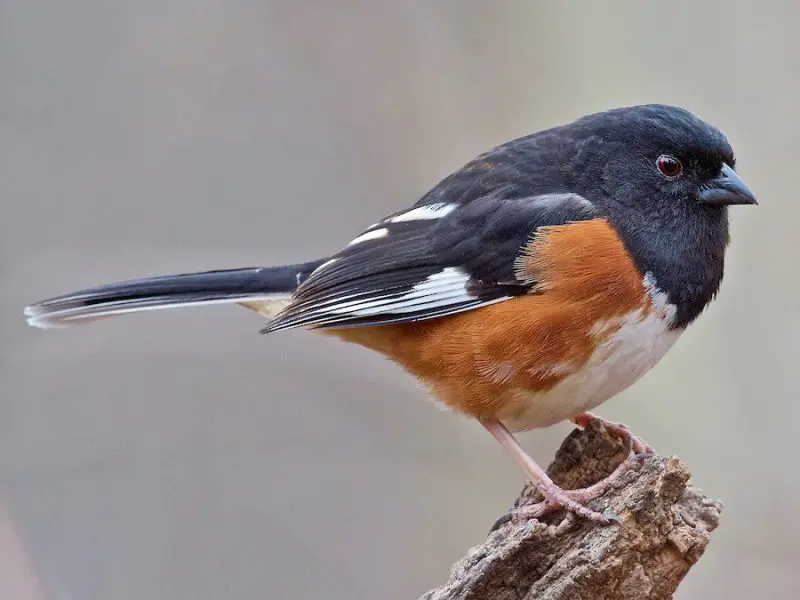
The Eastern Towhee is a large, striking sparrow with a black head, back, and tail in males, contrasted with rufous sides and a white belly. Females have the same pattern but are rich brown instead of black. These birds are about 7 to 8.5 inches long with a wingspan of 9 to 11 inches.
Towhees prefer brushy woods, forest edges, and thickets. They forage by hopping and scratching in leaf litter, often creating a rustling sound before being seen. Their call is a sharp “chewink” or “tow-hee,” and their song sounds like “drink-your-tea,” a cheerful and rhythmic melody. They feed on insects, seeds, berries, and fallen fruit.
Nesting occurs close to or on the ground, concealed in thick underbrush. Females lay 2 to 6 eggs and raise one or two broods per season. Fun fact: Eastern Towhees have been known to aggressively defend their territories, even against much larger birds, especially during the breeding season.
Cooper’s Hawk
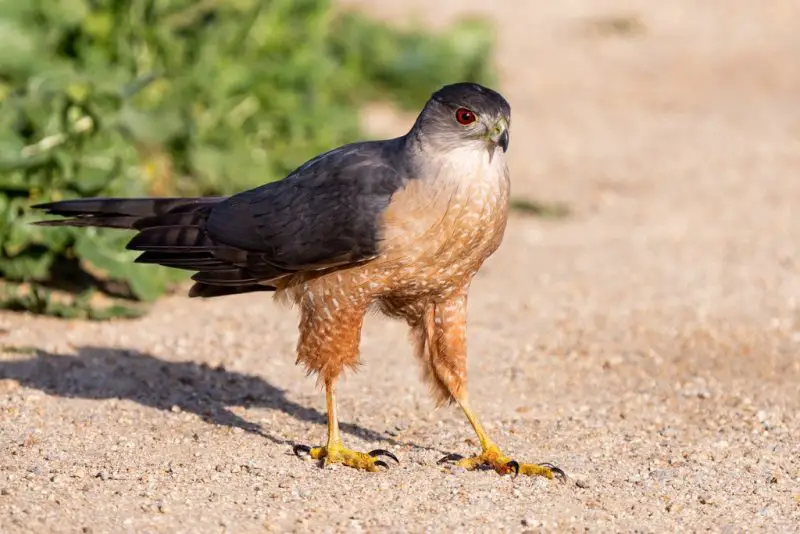
Cooper’s Hawk is a medium-sized raptor with a steely blue-gray back, reddish barring on the chest, and a long, rounded tail with dark bands. Adults have fierce red eyes, while juveniles are brown with streaked underparts and yellow eyes. These hawks measure 14 to 20 inches long with a wingspan of 24 to 35 inches.
They are stealthy and agile hunters, adept at weaving through dense trees to ambush small birds, their primary prey. Cooper’s Hawks are found in woodlands, suburban areas, and city parks. Their flight is characterized by several rapid wingbeats followed by short glides. Their call is a sharp, repeated “kek-kek-kek,” usually heard near nests.
They build stick nests high in trees, where the female lays 3 to 5 eggs. Both parents care for the young, but the female does most of the incubation. Fun fact: Cooper’s Hawks have adapted so well to suburban environments that backyard bird feeders—originally meant to attract songbirds—can sometimes become hunting grounds for them.
Great Horned Owl
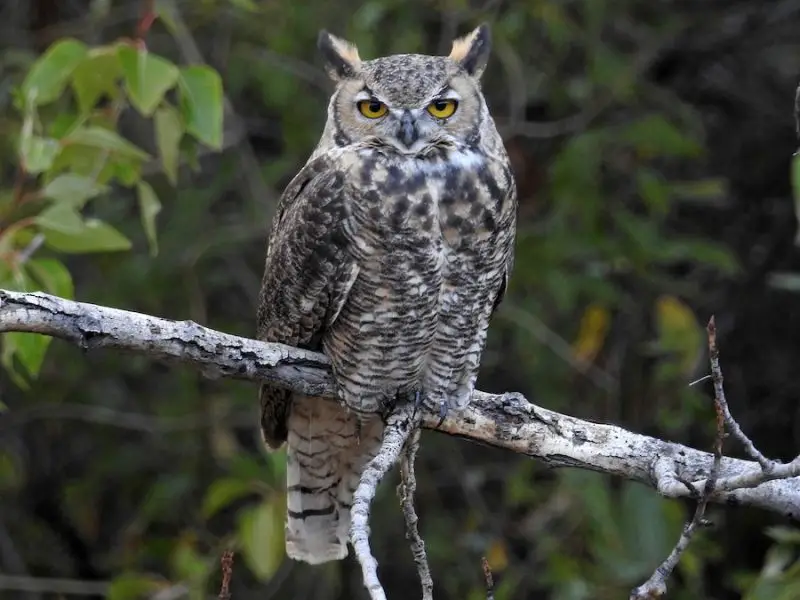
The Great Horned Owl is a large, powerful owl known for its distinctive ear tufts, intense yellow eyes, and deep hooting calls. Its plumage is mottled brown and gray, providing excellent camouflage among tree bark. These owls are 18 to 25 inches long with a wingspan of 40 to 57 inches, making them one of North America’s largest owls.
They inhabit forests, woodlots, open fields, and even urban parks, hunting primarily at night. Their diet is incredibly varied, including mammals, birds, reptiles, and even skunks. Their hoot, often rendered as “hoo-h’HOO-hoo-hoo,” can be heard from long distances and is used to mark territory and attract mates.
Great Horned Owls do not build their own nests, instead taking over those built by hawks, herons, or squirrels. Females usually lay 2 to 3 eggs in late winter. Fun fact: These owls have incredibly strong talons and are capable of exerting a crushing grip—strong enough to sever the spine of large prey like rabbits.
Barn Swallow
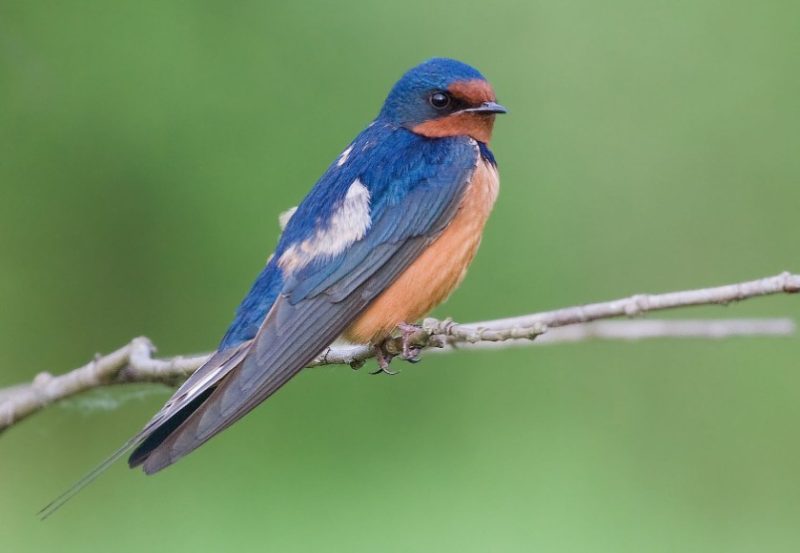
The Barn Swallow is a slender, graceful bird with iridescent blue-black upperparts, a rusty orange throat and forehead, and a creamy underbelly. Its most distinctive feature is its deeply forked tail with long outer feathers. Measuring about 7 inches in length with a wingspan of 12 to 13 inches, Barn Swallows are agile flyers known for their swift, acrobatic flight.
They inhabit open fields, farmlands, and rural areas where they build cup-shaped nests out of mud and grass, often attached to barns, bridges, or other man-made structures. Their diet consists almost exclusively of flying insects, which they catch on the wing with impressive speed and maneuverability. Their calls include cheerful twittering and chirping sounds.
Barn Swallows typically lay 3 to 7 eggs per clutch and may raise two or more broods during the breeding season. Fun fact: Barn Swallows are excellent long-distance migrants, traveling thousands of miles between North and South America each year.
White-throated Sparrow
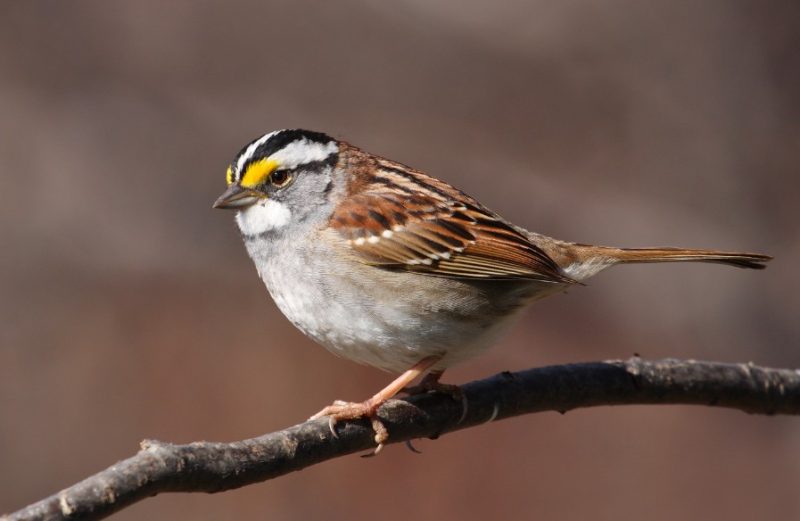
The White-throated Sparrow is a medium-sized songbird notable for its distinctive white throat patch and bold black and white stripes on the crown. Its body is mostly brown with streaked wings and a yellow spot between the eyes and bill. These sparrows measure about 6 to 7 inches long with a wingspan of 8 to 10 inches.
They favor dense underbrush, forest edges, and shrubby areas where they forage on the ground for seeds and insects. Their clear, whistled song, often described as “Old Sam Peabody, Peabody, Peabody,” is a familiar sound in their range, especially during migration and winter.
Nesting usually takes place low in dense shrubs or conifers. Females lay 3 to 5 eggs per clutch. Fun fact: White-throated Sparrows have two color morphs—white-striped and tan-striped—which mate assortatively, meaning white-striped birds tend to pair with tan-striped birds.
Pine Siskin
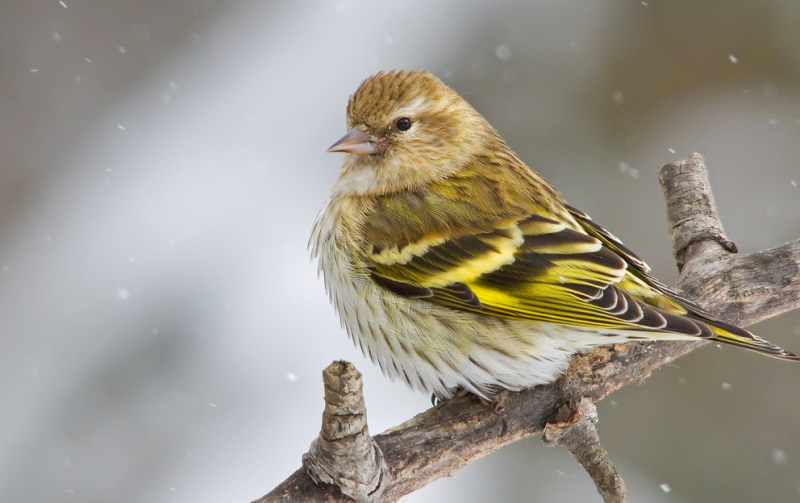
The Pine Siskin is a small, finch-like bird with streaky brown and yellow plumage. It has pointed wings and a slightly forked tail. Measuring about 4.5 to 5 inches in length with a wingspan of 7.5 to 9.5 inches, Pine Siskins are often seen in flocks, especially in winter when they move in search of food.
These birds inhabit coniferous forests and mixed woodlands, feeding primarily on seeds from conifers and other plants, as well as insects during breeding season. Their calls are sharp “zree” or “chee” notes, often delivered in rapid bursts. They frequently visit backyard feeders for thistle (nyjer) seed.
Pine Siskins build loose cup nests in conifers or deciduous trees, laying 3 to 6 eggs per brood. Fun fact: Pine Siskins show irruptive migration patterns, meaning their winter movements can vary dramatically year to year based on food availability.
FAQs about Common Birds in Illinois
What are the most common birds in Illinois?
Illinois hosts many common birds including the American Robin, Northern Cardinal, Blue Jay, House Sparrow, and Red-winged Blackbird.
When is the best time to birdwatch in Illinois?
Spring and fall migrations offer excellent birdwatching opportunities, but many species can be seen year-round depending on habitat.
How can I attract birds to my backyard in Illinois?
Provide native plants, fresh water, and a variety of feeders with seeds and suet to attract a wide range of birds.
Are there endangered bird species in Illinois?
Yes, species like the Piping Plover and Least Tern are endangered and protected within the state.
Can I take photos of birds in Illinois?
Absolutely! Use a zoom lens to capture birds without disturbing them, and be patient for the best shots.

